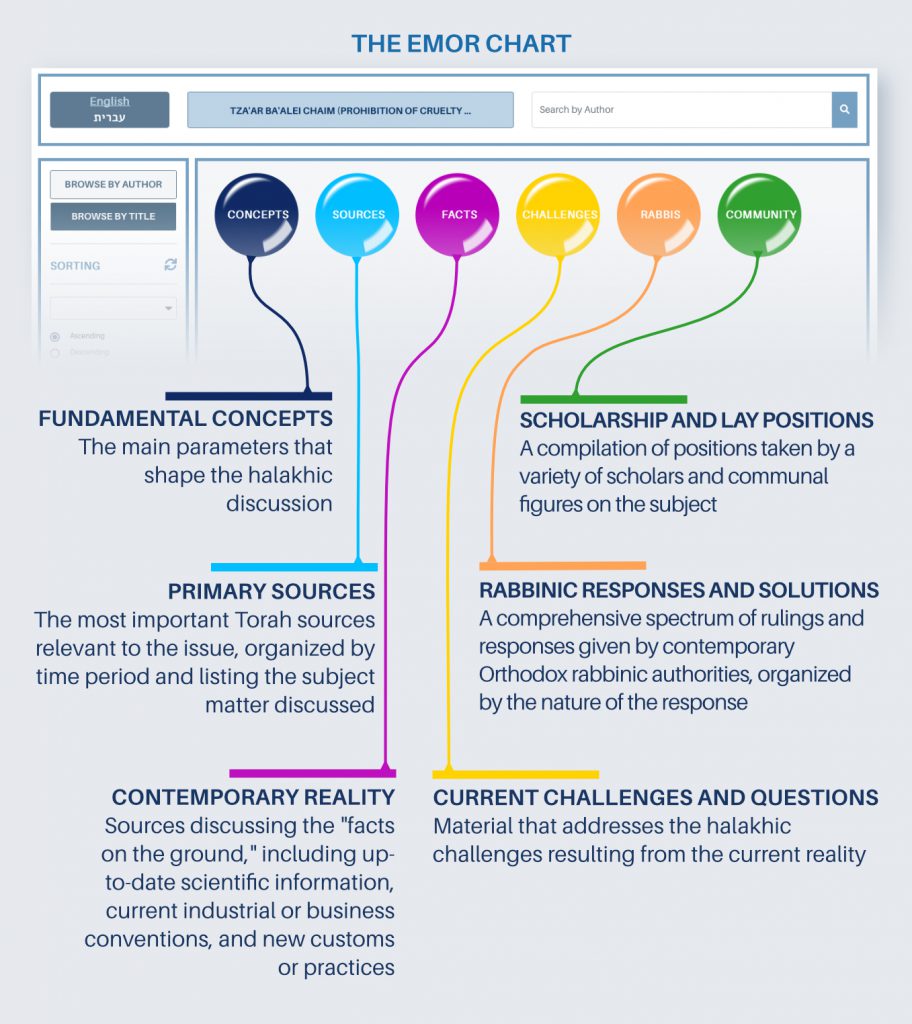Eventually the platform will include much more content and functionality.
In the meantime, experience the potential of the first tool of the Emor Mapping Project by trying out the features that are available now.
MISSION STATEMENT
To consolidate the full range of sources, rulings, and opinions concerning the pressing Jewish issues of our times, and to present them in a user-friendly format that facilitates both professional research and lay study.
BENEFITS
- The user-friendly format enables people without scholarly background to easily follow the discussion and grasp the issues.
- Rabbis and scholars will no longer need to spend hours hunting down relevant sources, which will already be compiled and accessible in one place.
METHODOLOGY
I. Selecting a Topic
Based on surveys and feedback, we will identify the most pressing contemporary issues — in the areas of both halakha (legal matters) and hashkafa (philosophy and faith). In this way, leaders will have readily available resources to address the challenging questions their communities raise.
II. Collecting Resources
Sources will be collected in both English and Hebrew. Anything published from an Orthodox stream of Judaism since 1900 will be included. The database will be constantly updated to incorporate new contributions.
We will be compiling sources from:
- Internet
- National Library of Israel (online and offline)
- Books (their abstracts and ToC)
- Journals
- Audio and video sources
- Major database libraries, including YU, JTS, Harvard, Columbia, and U.S. Library of Congress
- Otzar HaHochma (Hebrew)
- Bar Ilan Responsa Project (Hebrew)
III. Organizing and Categorizing
The sources will be cataloged and presented in a format readily accessible to every type of user, from scholar to beginner, with an interface that will not require advanced computer literacy.
THE EMOR CHART
An interactive visual representation that organizes the compiled data as depicted in the diagram below, which illustrates the relationship of these categories.
The Emor Chart represents the halakhic decision-making structure visually and organizes the information to help you understand both content and process. The colored bubbles let you investigate different facets of the halakhic process.
Rabbis (orange bubble) respond to new issues by considering the information in the first four bubbles (Concepts, Sources, Facts, and Challenges) as well as community needs (green bubble – scholars and lay leaders).

Articles, essays, books, audio shiurim (classes), and videos are categorized in folders and subfolders to help you pinpoint the information you want fast and understand it in its broader context.
THE EMOR NOTES constitute a vast reservoir of supplementary information displayed alongside primary sources. They include definitions of key terms and concepts, as well as hyperlinks to related issues in our larger database of text, audio, and video sources. The most prominent and authoritative articles are presented in Mapping Format, with four mastery levels of Emor Notes that empower even beginners to follow the flow of the arguments.
THE KNOWLEDGE BASE is a compilation of all the Emor Notes, searchable by key terms and concepts. Clear definitions are only a click away.

